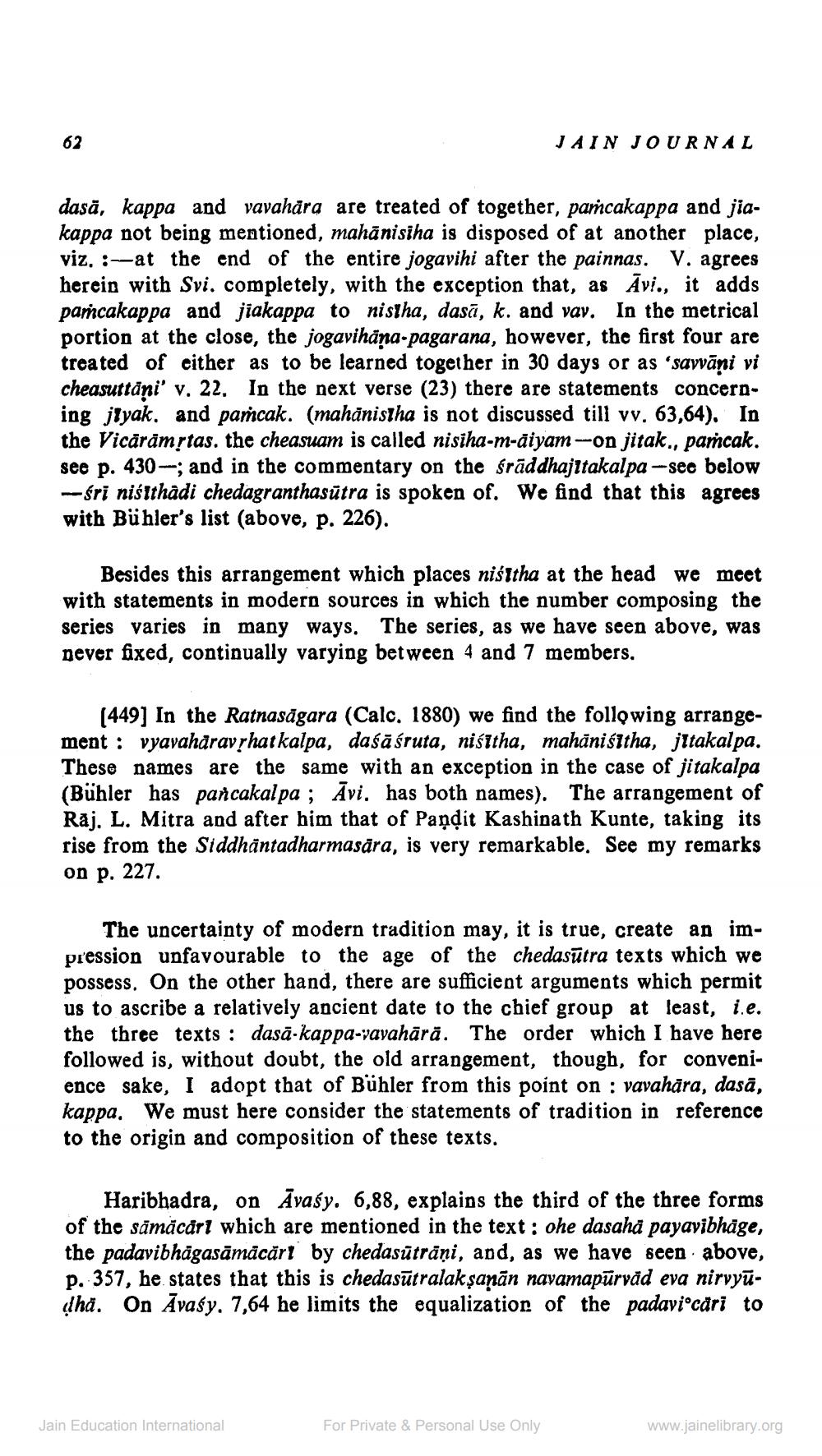Book Title: Jain Journal 1993 10 Author(s): Jain Bhawan Publication Publisher: Jain Bhawan Publication View full book textPage 6
________________ 62 dasă, kappa and vavahāra are treated of together, pamcakappa and jiakappa not being mentioned, mahānisiha is disposed of at another place, viz. at the end of the entire jogavihi after the painnas. V. agrees herein with Svi. completely, with the exception that, as Avi., it adds pamcakappa and jiakappa to nistha, dasā, k. and vav. In the metrical portion at the close, the jogavihāṇa-pagarana, however, the first four are treated of either as to be learned together in 30 days or as 'savvāņi vi cheasuttāni' v. 22. In the next verse (23) there are statements concerning jiyak, and paṁcak. (mahānistha is not discussed till vv. 63,64). In the Vicărămṛtas. the cheasuam is called nisiha-m-äiyam-on jitak., paṁcak. see p. 430-; and in the commentary on the śrāddhajitakalpa-s -see below ---śri niślthadi chedagranthasūtra is spoken of. We find that this agrees with Bühler's list (above, p. 226). JAIN JOURNAL Besides this arrangement which places nisitha at the head we meet with statements in modern sources in which the number composing the series varies in many ways. The series, as we have seen above, was never fixed, continually varying between 4 and 7 members. [449] In the Ratnasägara (Calc. 1880) we find the following arrangement: vyavahāravṛhatkalpa, daśāśruta, niśītha, mahāniśītha, jītakalpa. These names are the same with an exception in the case of jitakalpa (Bühler has pancakalpa; Āvi. has both names). The arrangement of Raj. L. Mitra and after him that of Pandit Kashinath Kunte, taking its rise from the Siddhäntadharmasāra, is very remarkable. See my remarks on p. 227. The uncertainty of modern tradition may, it is true, create an impression unfavourable to the age of the chedasūtra texts which we possess. On the other hand, there are sufficient arguments which permit us to ascribe a relatively ancient date to the chief group at least, i.e. the three texts: dasa-kappa-vavahārā. The order which I have here followed is, without doubt, the old arrangement, though, for convenience sake, I adopt that of Bühler from this point on: vavahāra, dasā, kappa. We must here consider the statements of tradition in reference to the origin and composition of these texts. Haribhadra, on Avaśy. 6,88, explains the third of the three forms of the sămăcăr? which are mentioned in the text: ohe dasaha payavibhāge, the padavibhāgasāmācārt by chedasūtrāņi, and, as we have seen above, p. 357, he states that this is chedasūtralakṣaṇān navamapūrvăd eva nirvyūdha. On Avasy. 7,64 he limits the equalization of the padavi'cari to Jain Education International For Private & Personal Use Only www.jainelibrary.orgPage Navigation
1 ... 4 5 6 7 8 9 10 11 12 13 14 15 16 17 18 19 20 21 22 23 24 25 26 27 28 29 30 31 32 33 34 35 36 37 38 39 40 41 42 43 44 45 46 47 48 49
